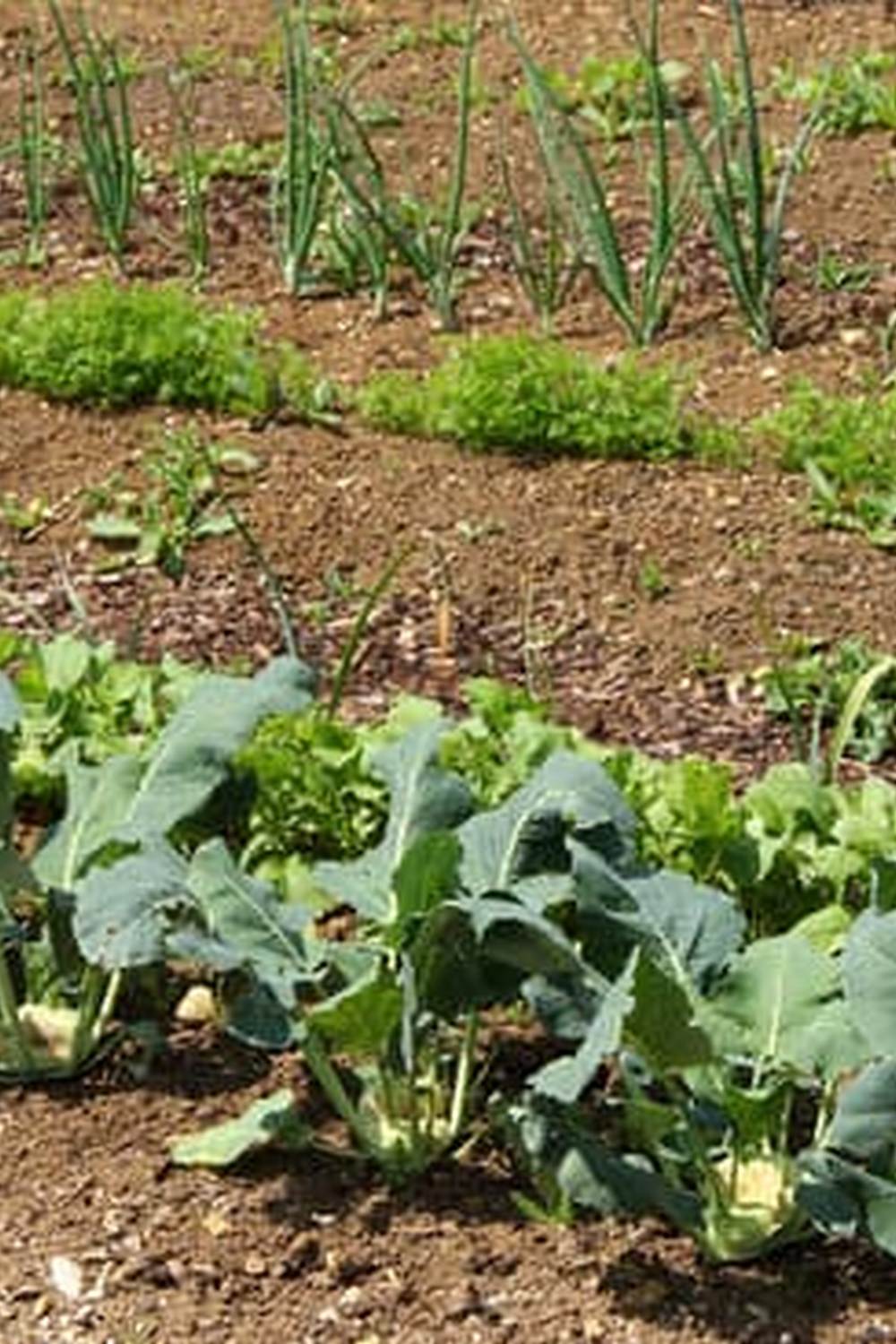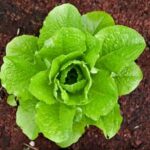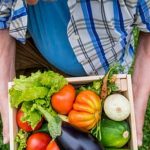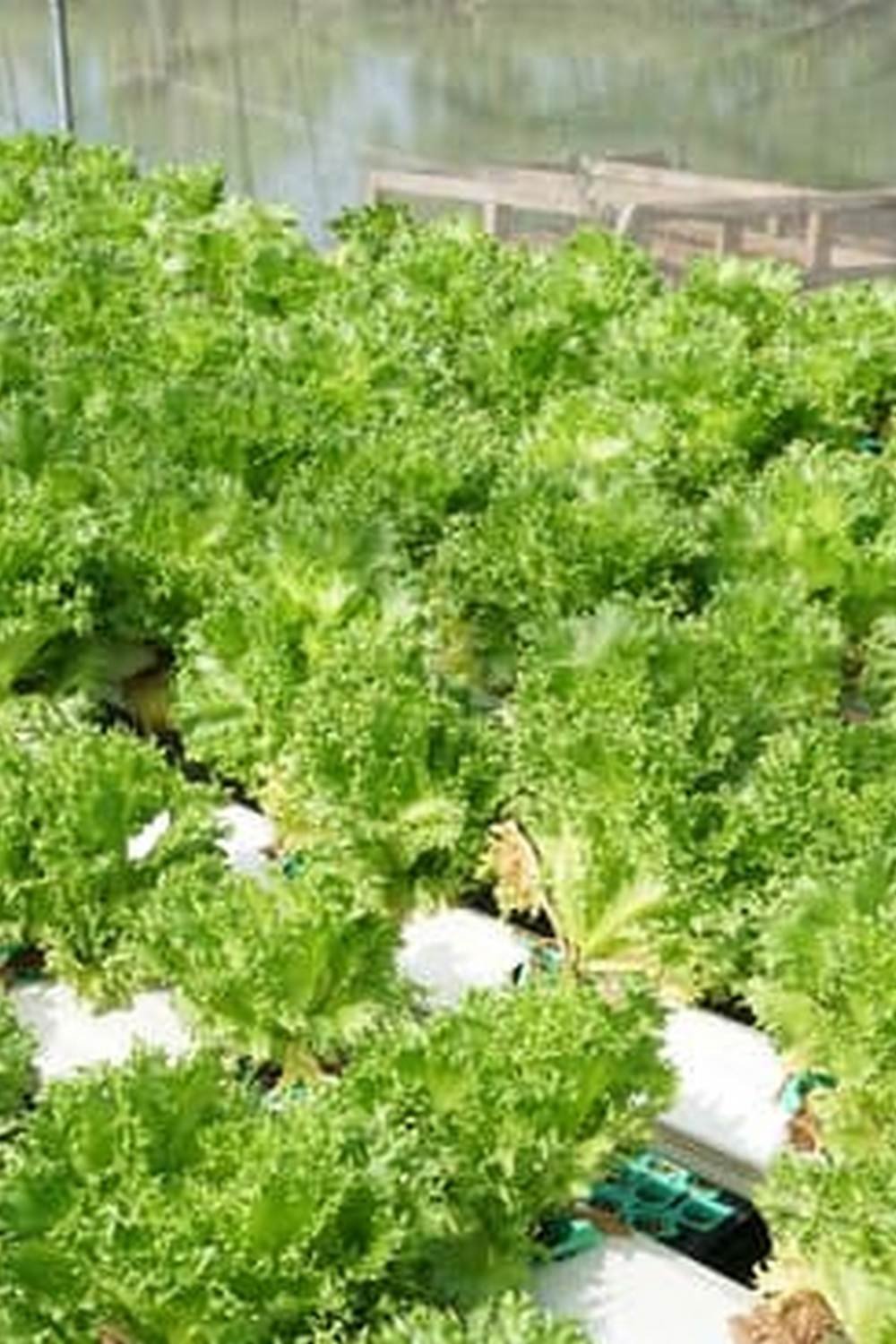Mountain gardening in Zone 7 during the fall season brings a unique set of challenges and opportunities for gardeners seeking to extend their harvest. In this region, which includes mountainous areas in states like Virginia, North Carolina, and Tennessee, the cooler temperatures of the autumn months present an ideal environment for growing a variety of fall vegetables.
Whether you are an experienced gardener or just starting out, understanding the specific climate and growing season of Zone 7 is essential for successful mountain gardening.
Zone 7 is characterized by its moderate winters and warm summers, providing a relatively long growing season compared to more northerly zones. With an average minimum winter temperature range between 0°F to 10°F (-18°C to – 12°C), gardeners in Zone 7 have the opportunity to cultivate cold-hardy crops well into the fall months.
The cooler temperatures also help enhance the flavor profiles of many vegetables, making them sweeter and more tender than those grown during warmer seasons.
As you prepare your mountain garden for fall planting in Zone 7, it’s important to consider the best varieties of fall vegetables that thrive in this climate. From hearty root vegetables like carrots and beets to leafy greens such as kale and lettuce, there are plenty of options to choose from.
By understanding the unique characteristics of Zone 7 and implementing proper planting and care techniques, you can enjoy a bountiful harvest of fresh, home-grown produce well into the cooler months of autumn.
Understanding Zone 7 Climate and Growing Season
Nestled in the mountainous terrain of Zone 7, fall vegetable gardening brings its own unique challenges and rewards. Understanding the climate and growing season in this region is crucial for a successful harvest. Zone 7 typically experiences mild winters with moderate temperatures, making it an ideal environment for certain vegetables to thrive even as the days grow shorter.
When planning your fall garden in Mountain Gardening Zone 7, it’s essential to take into account the average frost dates in your specific location. Knowing when the first frost is expected can help you determine which vegetables will have enough time to mature before the cold sets in. Some frost-tolerant vegetables that do well in Zone 7 include kale, Brussels sprouts, and carrots.
To make the most of your fall vegetable garden in Mountain Gardening Zone 7, consider incorporating a mix of quick-growing crops like arugula and radishes along with longer-season vegetables such as broccoli and cauliflower. This variety will ensure a continuous harvest throughout the season and maximize your garden’s productivity. Here are some popular fall vegetables to consider planting:
- Broccoli
- Cauliflower
- Kale
- Carrots
- Radishes
By understanding the climate and growing season in Mountain Gardening Zone 7, you can make informed decisions about which fall vegetables to plant and how best to care for them. With proper planning and attention to detail, your fall garden will flourish even as temperatures drop, providing you with a bountiful harvest of fresh, nutritious produce right from your backyard.
Best Fall Vegetables to Grow in Mountain Gardening Zone 7
Fall is a wonderful time to grow vegetables in Mountain Gardening Zone 7. The cooler temperatures and more stable weather conditions make it the perfect environment for a variety of vegetables to thrive. When planning your fall garden in Zone 7, consider these top choices for a successful harvest.
Leafy Greens
Vegetables like kale, spinach, and Swiss chard are excellent choices for fall planting in Zone 7. These leafy greens are cold-hardy and actually benefit from the lower temperatures. They can withstand light frosts and will continue to produce well into the fall season, providing you with nutrient-rich greens for your meals.
Root Vegetables
Carrots, beets, radishes, and turnips are all fantastic options for fall planting in Mountain Gardening Zone 7. These root vegetables grow well in the cooler weather and can develop sweeter flavors as the temperatures drop. Planting these vegetables in the fall allows them to mature over time before the ground freezes, ensuring a bountiful harvest.
Brassicas
Broccoli, cauliflower, cabbage, and Brussels sprouts are part of the brassica family of vegetables that do exceptionally well in Zone 7 during the fall season. These crops prefer cooler temperatures and actually taste better after exposure to frost. By planting these veggies in late summer or early fall, you can enjoy fresh produce well into winter.
Tips for Preparing Your Garden for Fall Planting
When preparing your garden for fall planting in Mountain Gardening Zone 7, there are several key steps to take to ensure a successful harvest. One important factor to consider is the soil quality. It is essential to amend your soil with nutrients and organic matter before planting your fall vegetables. Adding compost or aged manure can help improve the soil structure and provide essential nutrients for plant growth.
Planning Your Garden Layout
Another crucial aspect of preparing your garden for fall planting is planning your garden layout. Consider crop rotation and companion planting to optimize space and promote healthy growth. By grouping plants that complement each other, you can deter pests, improve soil fertility, and increase overall productivity in your garden.
Protecting Your Plants From Cold Weather
In Mountain Gardening Zone 7, where frost and cold weather can arrive early in the fall season, it is important to be prepared to protect your plants. Consider using row covers, cold frames, or cloches to shield tender crops from freezing temperatures. Keeping an eye on the weather forecast and being ready to cover your plants when necessary can help extend the growing season and ensure a bountiful harvest of fall vegetables.
Planting and Care Instructions for Fall Vegetables in Zone 7
When it comes to planting and caring for fall vegetables in Mountain Gardening Zone 7, it is important to take into consideration the specific climate and growing conditions of this region. Zone 7 typically experiences mild winters with occasional frost, making it ideal for growing a variety of crops during the fall season. Here are some tips and guidelines to help you successfully cultivate your fall vegetable garden in Zone 7:
- Choose the Right Vegetables: Select cool-season vegetables that are well-suited for the Zone 7 climate, such as broccoli, Brussels sprouts, carrots, kale, lettuce, radishes, and spinach.
- Prepare Your Soil: Before planting your fall vegetables, make sure to enrich your soil with compost or organic matter to improve its quality and fertility. Ensure proper drainage to prevent waterlogging during the rainy season.
- Planting Schedule: Check the average first frost date in your area and plan your planting schedule accordingly. Start seeds indoors for certain crops or directly sow them into the ground based on their preferred growing conditions.
Proper care and maintenance are essential for thriving fall vegetables in Mountain Gardening Zone 7. Here are some key steps to ensure healthy growth and abundant harvests:
- Watering: Monitor soil moisture levels regularly and provide adequate watering to keep plants hydrated. Avoid overwatering or allowing waterlogged conditions that can lead to root rot.
- Fertilizing: Use organic fertilizers rich in nutrients to feed your fall vegetables throughout the growing season. Follow recommended application rates and frequency based on the specific needs of each crop.
- Weed Control: Keep weeds at bay by regularly removing them from your garden beds. Weeds compete with your plants for resources like sunlight, water, and nutrients, so it’s crucial to maintain a weed-free environment.
By following these planting and care instructions for fall vegetables in Mountain Gardening Zone 7, you can enjoy a bountiful harvest of fresh produce during the cooler months. Stay tuned for more tips on dealing with frost and cold weather in the upcoming section of this article.
Dealing With Frost and Cold Weather in Mountain Gardening Zone 7
Dealing with frost and cold weather is a crucial aspect of mountain gardening in Zone 7, particularly when it comes to growing fall vegetables. The first step in preparing for frost is to know the average first and last frost dates in your area. In Zone 7, the first frost usually occurs around mid to late October, so planning ahead is essential.
To protect your fall vegetable garden from frost, you can use various methods such as row covers, cloches, tunnels, or cold frames. Row covers are lightweight and can be placed directly over plants, providing an extra layer of insulation. Cloches are like mini greenhouses that can be placed over individual plants for protection.
Tunnels are structures made from plastic or fabric that cover entire rows of crops. Cold frames are enclosed structures with a transparent lid that captures heat during the day and releases it at night.
It’s also important to monitor weather forecasts regularly during the fall season in Zone 7. If a frost is predicted, take proactive measures to protect your crops in advance. Being prepared for cold weather will help ensure a successful fall vegetable harvest in your mountain gardening zone 7.
| Method | Description |
|---|---|
| Row Covers | Lightweight covers placed directly over plants for insulation |
| Cloches | Mini greenhouses for individual plant protection |
| Tunnels | Structures covering entire rows of crops made from plastic or fabric |
Harvesting and Storing Fall Vegetables From Your Garden
As the fall season progresses in the mountain gardening zone 7, it is essential to pay attention to the optimal time for harvesting your vegetables. Different vegetables have varying maturity periods, so it is crucial to check the specific harvest times for each crop in order to enjoy them at their peak flavor and nutrition. For example, root vegetables like carrots and beets are generally ready for harvest when their tops start to poke above the ground.
Once you have successfully harvested your fall vegetables, proper storage is key to preserving their freshness and extending their shelf life. Most root vegetables can be stored in a cool, dry place such as a cellar or basement with good ventilation.
Leafy greens like kale and spinach should be kept in the refrigerator crisper drawer in an airtight container or plastic bag. It is important to remove any damaged or rotting pieces before storing them to prevent spoiling the rest of the produce.
When storing fall vegetables such as pumpkins, squash, and potatoes, make sure they are kept in a dark area with moderate humidity levels. Light exposure can cause certain vegetables to develop off-flavors or spoil faster. By adhering to proper harvesting and storage techniques, you can enjoy the bounty of your mountain garden well into the winter months.
| Vegetable | Optimal Harvest Time |
|---|---|
| Carrots | When tops poke above ground |
| Kale | Young leaves as needed |
| Pumpkins/Squash | When skin hardens |
Benefits of Fall Vegetable Gardening in Mountain Gardening Zone 7
One of the biggest benefits of fall vegetable gardening in Mountain Gardening Zone 7 is the extended growing season that this region offers. With the cooler temperatures and shorter days, fall vegetables thrive in this environment, providing a bountiful harvest well into the autumn months. This additional time allows for a wider variety of crops to be grown, giving gardeners the opportunity to experiment with different vegetables that may not have been suited for the summer months.
Another advantage of fall vegetable gardening in Zone 7 is the ability to enjoy fresh, homegrown produce long after the traditional growing season has passed. With proper planning and care, cold-hardy vegetables like kale, Brussels sprouts, and carrots can continue to grow even as temperatures drop. This means a longer window of time to enjoy delicious, nutrient-rich vegetables straight from your garden to your table.
In addition to extending the harvest season, fall vegetable gardening in Mountain Gardening Zone 7 can also help improve soil health and fertility. By planting cover crops or green manure in the fall, gardeners can protect their soil from erosion, suppress weed growth, and add essential nutrients back into the earth. This practice not only benefits your current crop of fall vegetables but sets the stage for a successful gardening season next year as well.
Troubleshooting Common Issues in Mountain Gardening Zone 7 During the Fall Season
Fall vegetable gardening in mountain gardening zone 7 can be a rewarding and fulfilling experience, but it also comes with its own set of challenges. Understanding the unique climate and growing conditions of zone 7 is crucial for successful harvests in the fall season. From preparing your garden for planting to dealing with frost and cold weather, there are several key factors to consider when cultivating fall vegetables in this region.
One common issue that gardeners may face in mountain gardening zone 7 during the fall season is unexpected temperature drops leading to frost or freezing conditions. To mitigate this risk, it is important to monitor weather forecasts closely and be prepared to protect your plants with row covers or cloches if necessary. Additionally, choosing cold-hardy varieties of fall vegetables can help minimize the impact of sudden temperature changes on your crops.
Another challenge that gardeners may encounter during the fall season in mountain gardening zone 7 is pest infestations due to cooler temperatures. To combat pests effectively, consider using natural remedies such as neem oil or introducing beneficial insects like ladybugs to your garden.
Regularly inspecting your plants for signs of infestation and taking prompt action can help prevent widespread damage to your fall vegetable crops. By staying proactive and implementing appropriate strategies, you can overcome common issues and enjoy a bountiful harvest from your mountain garden in zone 7 this fall season.
Frequently Asked Questions
What Vegetables Are Good to Grow in the Fall?
In the fall, vegetables like broccoli, kale, spinach, carrots, radishes, and lettuce thrive in cooler temperatures. These crops can withstand light frost and are perfect additions to a fall garden.
What Vegetables Grow in the Mountains?
Vegetables that grow well in mountain areas include hardy varieties like potatoes, onions, carrots, beets, and peas. These plants can tolerate cooler temperatures and shorter growing seasons commonly found at higher elevations.
When Should I Plant My Fall Vegetable Garden?
The best time to plant a fall vegetable garden depends on your climate zone. Generally, seeds should be sown in late summer for a fall harvest. It’s important to consider the specific growing requirements of each vegetable to determine the ideal planting time for your region.

If you’re looking to get into vegetable gardening, or are just looking for some tips on how to make your current garden better, then you’ve come to the right place! My name is Ethel and I have been gardening for years. In this blog, I’m going to share with you some of my best tips on how to create a successful vegetable garden.





